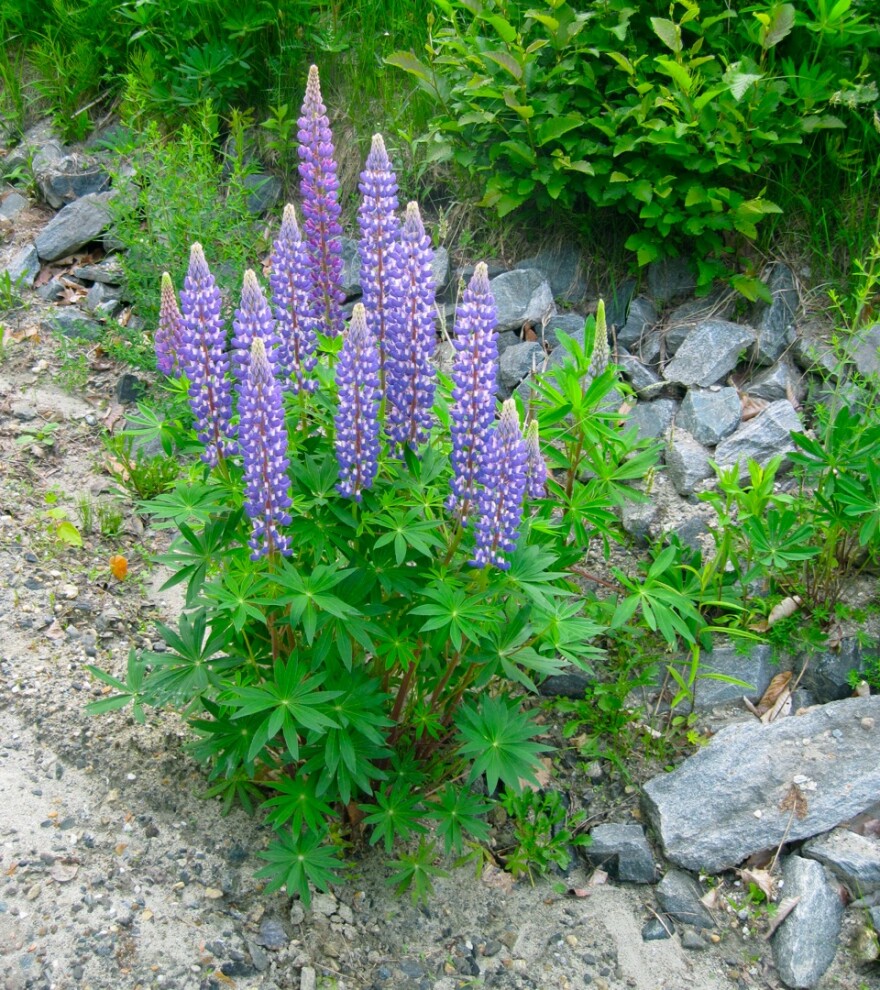Lately I’ve been thinking a lot about Miss Rumphius, a well loved picture book for kids published more than thirty years ago. Its fictional heroine, Miss Alice Rumphius, found a way to make the world a more beautiful place by scattering five bushels of flower seeds around the roadsides, fields and lanes of her New England seaside village at the end of summer. The plumes of blue, purple and rose-colored lupines that appeared the following spring were the first of thousands that gradually covered the hillsides and hollows of the village and earned her the nickname of That Crazy Old Lady.
There is no Miss Rumphius in my neighborhood, yet some kindred force of nature has been scattering lupine seeds in unlikely places. And I’ve watched with interest as struggling seedlings in the ditch alongside my gravelly road have survived and burst into bloom. In early spring, I’d transplanted two of the puniest into my garden. As I dug them from the bone dry sand and stone, I imagined how well they would do in my rich damp garden beds.
Instead, my transplants remain stunted versions of their sturdy siblings now blooming in parched gravel down the hill. Several of those are nearly two feet high and festooned with the spiky blossoms that will drop more seeds into the patch of rocky sand from which more lupines will sprout next spring. Clearly, my manure enhanced garden plot is too rich for these sturdy survivors of gully washers, road salt and drought.
These hardy plants thrive in poor, sandy conditions and need little care – which is why lupine’s historical roots are planted so deeply in Egyptian soil, where it’s been cultivated for agricultural purposes for some two thousand years. And lupine was chosen as the state flower of Texas, where it’s called the bluebonnet and planted by highway departments along barren stretches of road. Lupines are legumes that fix nitrogen in the soil, lure butterflies and attract native bees and hummingbirds. They’re edible to humans and livestock and deliver protein similar to soybeans, but with less fat. In South American and Mediterranean countries salty lupine beans are consumed as snacks. The Portuguese call them lupini and have them with beer.
My struggling transplants remind me that there’s something to be said about leaving things well enough alone. Not every flower can be improved by the human impulse to transplant and tame it. If I’m willing to wait, those lupines in the rocky ditch will spread and bloom right where they are, year after year. Perhaps gathering a few of their dropped seeds this fall and scattering them in similar inhospitable soil alongside another town road would be the best way to honor these colorful survivors that give so much beauty with so little help.
Unlike the Portuguese, Miss Rumphius didn’t enjoy salted lupine seeds with the occasional beer. But in her dedication to leaving behind a little bit of beauty, the practical New Englander was definitely on to something.





